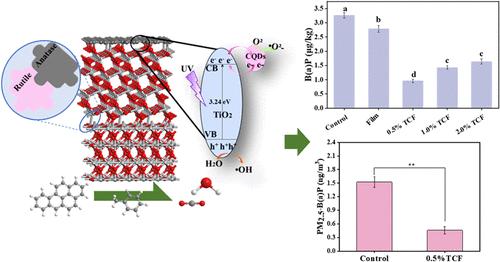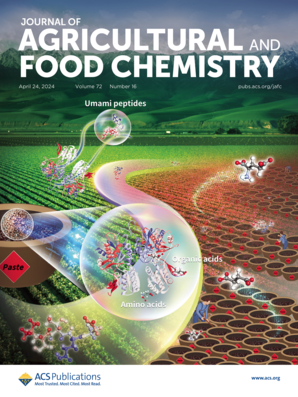Aloe vera Extract-Based Carbon Quantum Dots-Modified Mixed-Phase TiO2 Nanoflowers for Photocatalytic Degradation of Benzo(a)pyrene in Smoked Sausages and Smoke Environments
IF 5.7
1区 农林科学
Q1 AGRICULTURE, MULTIDISCIPLINARY
引用次数: 0
Abstract
To remove benzo(a)pyrene (B(a)P) from smoked meat products and smoky environments, carbon quantum dots (CQDs)-modified TiO2 nanoflowers (TiO2–CQDs) have been considered an effective method. The excellent photocatalytic performance of the TiO2–CQDs nanoflowers was attributed to their broad photocatalytic surface and effective separation of the photogenerated carriers. DFT calculations adequately confirmed the preparation of the TiO2–CQDs nanoflowers and explained their chemical bonding interactions and adsorption energies. In addition, films (TCFs) based on TiO2–CQDs nanoflowers were prepared, which demonstrated excellent activity and adsorption capacity for degrading B(a)P. The application of the photocatalytic films reduced B(a)P in smoked sausages by 49.7–70.9%, respectively, and PM2.5-B(a)P emitted into the atmosphere was reduced by 69.8%. Finally, the degradation pathways and intermediates of B(a)P were analyzed in detail, and their toxicities were evaluated. This method has practical applications for controlling B(a)P in smoked foods and environments.

求助全文
约1分钟内获得全文
求助全文
来源期刊
CiteScore
9.90
自引率
8.20%
发文量
1375
审稿时长
2.3 months
期刊介绍:
The Journal of Agricultural and Food Chemistry publishes high-quality, cutting edge original research representing complete studies and research advances dealing with the chemistry and biochemistry of agriculture and food. The Journal also encourages papers with chemistry and/or biochemistry as a major component combined with biological/sensory/nutritional/toxicological evaluation related to agriculture and/or food.

 求助内容:
求助内容: 应助结果提醒方式:
应助结果提醒方式:


